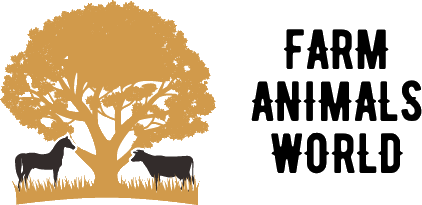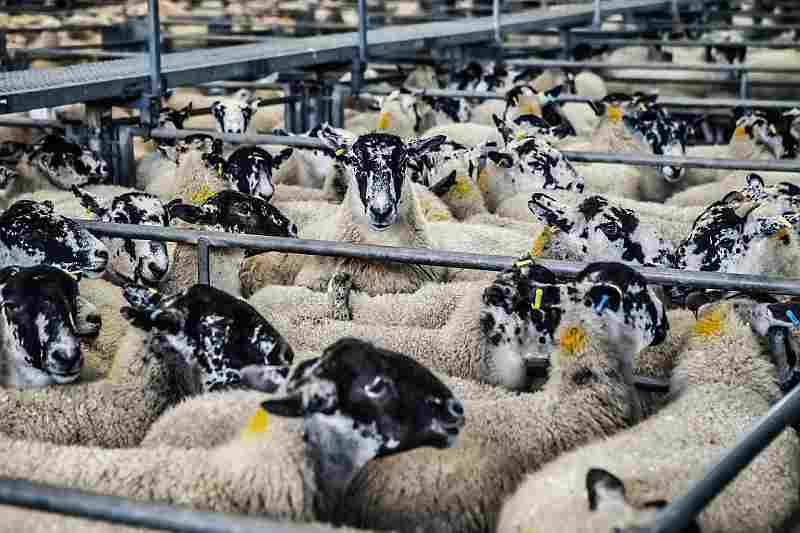Navigating the world of meat sheep breeds is like fine-tuning a gourmet recipe. You’re seeking the perfect balance of flavor, growth rate, and ease of care. Whether it’s the robust Suffolk, the muscular Texel, the hardy Dorper, the savory Hampshire, or the versatile Katahdin, each breed brings its own strengths to the table.
As you analyze their traits, you’ll discover the breed that not only thrives in your care but also satisfies the most discerning palate, helping you identify the best sheep for meat in your flock.
Understanding Meat Sheep Breeds
You’ll find several breeds of sheep that are particularly well-suited for meat production, each with unique characteristics and advantages. Delving into sheep genetics reveals a landscape where certain breeds excel due to specific gene expressions that favor rapid growth, efficient feed conversion, and optimal carcass qualities.
For instance, the Suffolk breed is renowned for its excellent growth rate and muscular build, making it a top choice for meat producers. Breed temperament is another pivotal factor; docile breeds like the Dorset can be managed more easily, reducing stress and potentially improving meat quality.
Analyzing breed-specific genetic markers allows for informed selection, ensuring that the chosen breed aligns with production goals and environmental conditions, maximizing profitability and sustainability in meat-sheep farming.
Suffolk: The Prime Choice
Why choose the Suffolk breed for your meat production? The Suffolk sheep’s characteristics align perfectly with commercial meat production’s demands, offering a blend of traits that contribute to its status as a prime choice:
- Growth Rate: Suffolks exhibit a rapid growth rate, reaching market weight efficiently, translating into cost savings and increased turnover for your operation.
- Carcass Quality: This breed is renowned for its excellent carcass conformation and high meat-to-bone ratio, providing more saleable meat.
- Suffolk Longevity: The breed’s longevity ensures that breeding stock can be productive over several seasons, enhancing your investment’s value.
- Breed Temperament: Their docile temperament makes handling and management easier, reducing labor and stress-related losses.
Analyzing these factors, the Suffolk sheep breed emerges as a top contender for meat production endeavors.
Texel: Exceptional Muscle Yield
You’ll find that the Texel breed stands out for its remarkable muscle yield, providing a high carcass quality sought after in the meat industry.
Their efficient feed conversion ratio ensures you’re getting more meat per pound of feed than other breeds.
Additionally, Texels are known for producing lean meat, a key factor for health-conscious consumers and premium markets.
High Carcass Quality
Regarding carcass quality, you can’t overlook the Texel breed, renowned for its exceptional muscle yield and lean meat. Sheep genetics have been meticulously refined to meet market demands, and the Texel stands out as a prime example of successful selective breeding.
Their carcasses are sought after for several reasons:
- High Muscle-to-Bone Ratio: Texels possess superior muscling, translating into more saleable meat and less waste.
- Lean Meat Quality: The breed typically yields meat with less fat, aligning with consumer health preferences.
- Efficient Feed Conversion: They convert feed into muscle more effectively, enhancing their economic viability for producers.
- Consistency: Texel carcasses are known for their uniformity, providing a reliable product for the meat industry.
Your consideration of Texels reflects a strategic approach to sheep farming, focusing on breeds that deliver both quality and efficiency.
Efficient Feed Conversion
Texel sheep’s remarkable muscle yield isn’t only about the quantity of meat; their efficient feed conversion means you’re getting more meat per pound of feed than with many other breeds. Their grazing efficiency optimizes pasture utilization, converting forage into muscle mass more effectively. This breed exhibits a superior ability to meet its nutritional requirements from less input, making it a cost-effective option for meat production.
Texels consistently demonstrate lower consumption requirements for equivalent weight gain when analyzing feed-to-gain ratios. This efficiency is due to their genetically ingrained propensity for muscle development rather than fat deposition. As a result, you’re benefiting from high-quality meat and an economically sustainable model that maximizes your investment in feed and pasture resources.
Lean Meat Production
The Texel sheep stands out with its exceptional muscle yield when selecting a breed for lean meat production. This breed, originating from the Isle of Texel in the Netherlands, has been selectively bred for muscularity and leanness, making it a superior choice for meat producers.
Here are some technical aspects to consider:
- Genetics: Texels possess a genetic propensity for high muscle-to-fat ratio, enhancing meat leanness.
- Sheep Nutrition: Optimal feeding regimes are crucial for maximizing muscle development while maintaining low-fat levels.
- Growth Rate: Texels exhibit rapid growth, reaching market weight efficiently without compromising meat quality.
- Butchering Techniques: Proper butchering maximizes yield and preserves the integrity of the muscle fibers, ensuring a high-quality product.
Adhering to these points ensures that you capitalize on the Texel’s capabilities for lean meat production.
Dorper: Low-Maintenance Meat Producers
Turning your attention to Dopers, you’ll find they epitomize low-maintenance meat production due to their robust breed traits.
Their resilience to harsh conditions affords you a more economical approach to sheep farming.
Additionally, Dopers exhibit a rapid growth rate, ensuring you a quicker turnover from pasture to profit.
Hardy Breed Traits
Among the various breeds suitable for meat production, the Dorper sheep are exceptionally hardy and low-maintenance, a trait that significantly eases their care. These sheep possess distinctive characteristics that contribute to their robustness:
- Climate resilience: Dorper sheep exhibit a remarkable ability to thrive in various environmental conditions, from arid regions to more temperate climates.
- Breeding cycles: Unlike many other sheep breeds, Dopers can breed year-round, providing a continuous meat supply.
- Self-shedding: They have a unique quality of shedding their wool, which diminishes the need for shearing and related labor.
- Disease resistance: Dopers are notably resistant to many common ovine diseases, reducing the necessity for interventions and veterinary costs.
Their adaptability positions Dorper sheep as a prime choice for meat producers seeking efficiency and profitability.
Fast Growth Rate
You’ll appreciate that, besides their hardy nature, Dorper sheep boast a fast growth rate, making them an ideal choice for efficient meat production. This breed’s accelerated development directly results from meticulous sheep genetics management. Dorpers reach market weight quickly and with less feed compared to other breeds, aligning with market demands for sustainable and cost-effective meat sources.
Their genetic composition is tailored for rapid muscle growth and early maturation, ensuring they meet the market’s weight specifications sooner. Moreover, this breed’s low-maintenance attribute stems from their adaptability and robustness, which reduce the need for intensive care. Consequently, Dorpers offers producers a competitive advantage by maximizing the return on investment through their swift transition from pasture to plate.
Hampshire: Flavorful and Fast-Growing
In your search for the best meat-producing sheep, consider the Hampshire breed, known for its rapid growth and richly flavored meat. The Hampshire heritage has significantly influenced modern breeding practices, optimizing meat production.
Analyze the following factors:
- Genetic Prowess: Hampshires possess a robust genetic profile that promotes superior growth rates, ensuring a swift journey from pasture to plate.
- Feed Conversion Efficiency: They effectively convert feed into muscle mass, which is pivotal for economical meat production.
- Carcass Quality: Their carcasses exhibit excellent meat-to-bone ratios, yielding more edible product per animal.
- Flavor Profile: Hampshires offer a distinctively rich flavor, a direct result of their unique muscle fiber composition and intramuscular fat distribution.
Implementing these breeds in your flock can maximize profitability and market desirability.
Katahdin: Adaptable Hair Sheep
Katahdin sheep offer you a low-maintenance alternative for meat production, with their adaptability and hair-based coat eliminating the need for shearing. This breed showcases Katahdin resilience by thriving in a variety of climates, from hot, humid environments to colder regions. They’re hardy animals, resistant to many health issues plaguing wool breeds, which translates into reduced veterinary costs and management efforts for you.
Wool-free benefits include not only the absence of shearing but also a diminished risk of external parasite infestation, such as ticks and lice, which are often more problematic in wool breeds. Consequently, Katahdins are an efficient choice, converting feed into muscle mass without the energy expense of wool production, ultimately yielding a favorable meat-to-feed ratio.
Frequently Asked Questions
How Do Different Sheep Breeds Impact the Environment Differently When Raised for Meat Production?
You’ll find that sheep breeds vary in climate resilience and grazing efficiency, significantly affecting their environmental impact during meat production. Analyze these traits to understand each breed’s ecological footprint.
What Are the Welfare Concerns Associated With Raising Sheep for Meat, and How Do the Practices Vary Among the Different Breeds?
Imagine the plight of sheep; you’re concerned with their welfare when raised for meat. Ethical breeding and stress management practices vary and demand scrutiny to ensure humane treatment across different breeds.
How Does the Choice of Sheep Breed Affect the Local Ecosystem and Biodiversity When They Are Grazed on Pastures?
Your choice of sheep breed significantly impacts grazing patterns, directly affecting soil health and local biodiversity. Strategic breed selection can promote sustainable ecosystems and mitigate adverse environmental effects.
Can Sheep Meat Production Be Integrated Into Sustainable Farming Practices, and What Role Do Different Breeds Play in This?
You can integrate sheep meat production sustainably by selecting breeds with superior sheep genetics and efficient feed conversion, which reduces environmental impact and supports agricultural biodiversity.
What Are the Differences in Meat Quality and Taste Between Heritage Sheep Breeds and More Commercial Breeds Used for Meat Production?
Heritage breeds offer distinct flavor nuances, whereas commercial breeds often present a more uniform taste. Your cooking methods may vary to enhance each type’s unique profile, with heritage meats typically requiring more careful preparation.
Conclusion
You’ve explored some of the best sheep breeds for meat production, each offering unique advantages.
Notably, the Texel stands out with an impressive lean meat yield, clocking in at nearly 2% higher than other breeds on average. This statistic underscores the breed’s efficiency and profitability.
When choosing the right sheep for your needs, carefully consider these breeds’ traits to maximize your meat yield and ensure a successful, sustainable flock.

